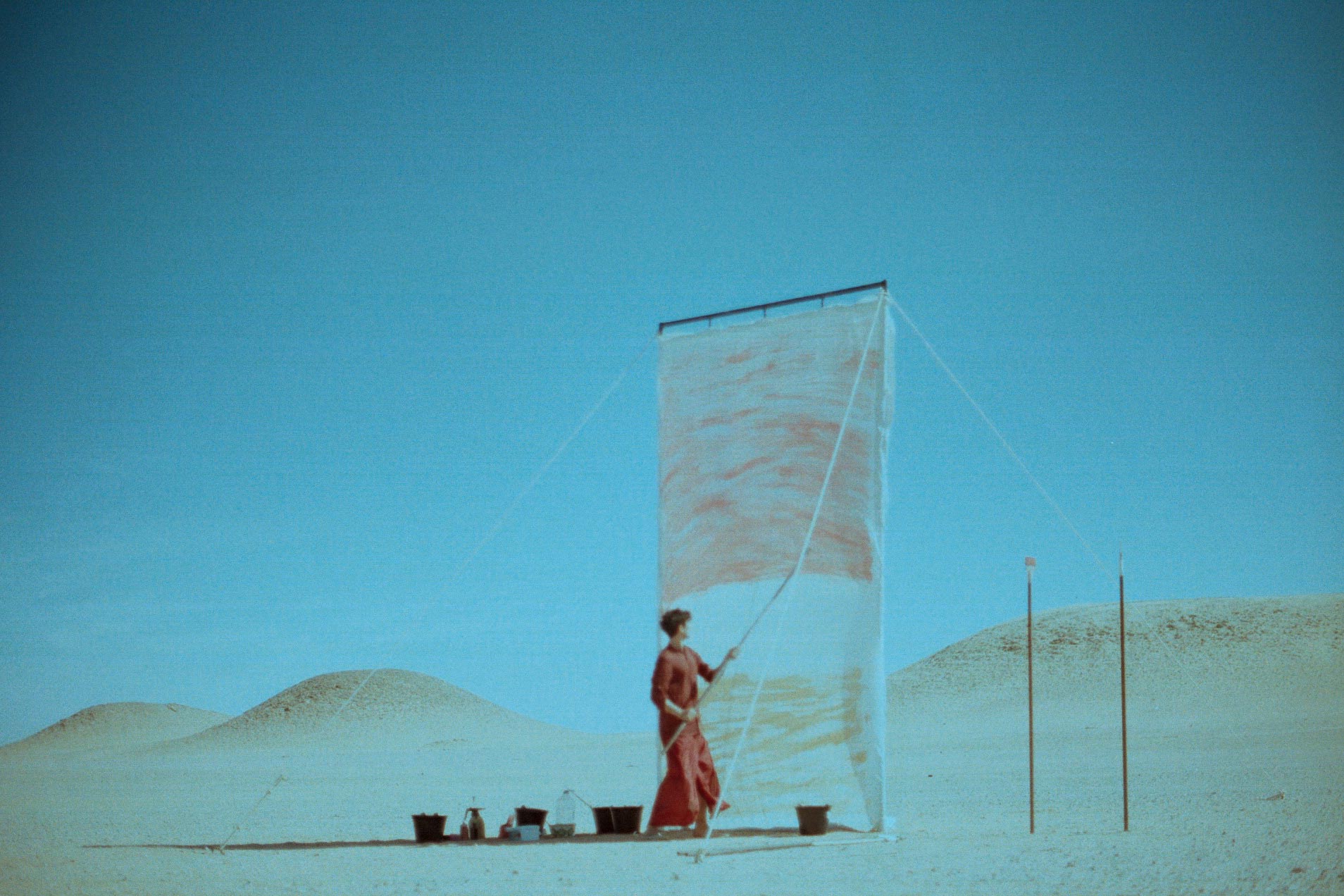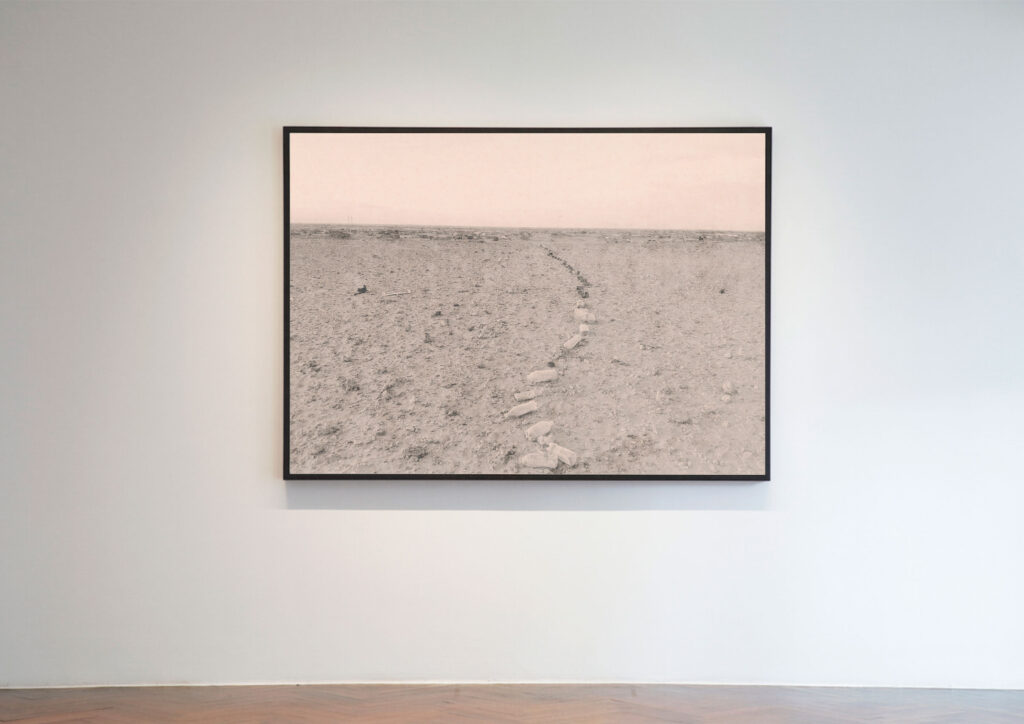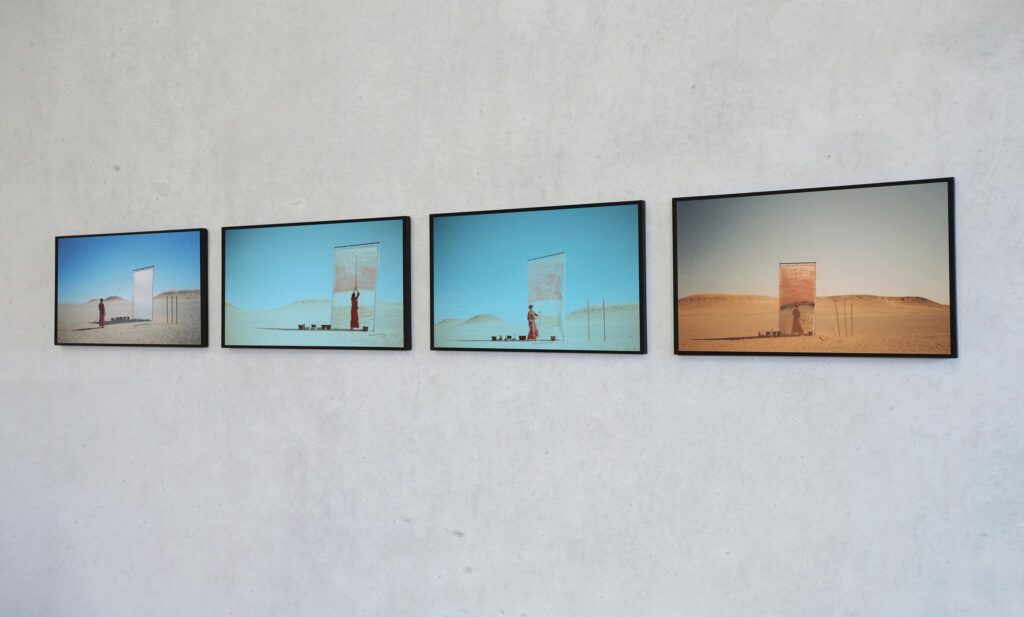Location 01 / Memory as a form of resilience

NOMADIC RESILIENCE – Performance photographic analogic documentation – Performance: 6x2m, Sahara’s sand, water, camp’s water, dust, pigments, and used engine oil on linen, Western Sahara territories 2019. Photo credits, Gerard Aparecio.
NOMADIC RESILIENCE / Performance (2019) / Part of Islands of Time research project / Location 01
El Boujdour Refugee camp / Western Sahara Territories 2019. In collaboration with Escuela de Formación Audiovisual Abidin Kaid Salehand and the Resistance Sahara Documentary by Sidal Ergüder
Nomadism as a form of migratory process, memory as a form of resilience – As part of the Islands of Time research project, the performance Nomadic Resilience took place in the Western Sahara territories, collaborating with El Boujdour Refugee camp, Escuela de Formación Audiovisual Abidin Kaid Saleh and the Resistance Sahara Documentary by Sidal Ergüder – Zero state productions Ltd. The research analyzed the harshness that divides and segregates the Sahrawi people, a living condition that keeps an entire nomadic population hostage in camps inside their own territories. Western Sahara has been disputed since 1975, when Morocco claimed the territory as part of the kingdom, and the Polisario (Frente Popular de Liberación de Saguía el Hamra y Río de Oro) fought a guerrilla war for the Sahrawi people’s independence. Morocco argues that the notion of Western Sahara statehood is illegitimate and that the region’s resources are theirs. However, the Polisario’s self-declared Sahrawi Arab Democratic Republic is recognized by the African Union and Algeria, which has given the group military support for decades and currently hosts more than a hundred and seventy thousand Sahrawi refugees in confined camps. As a result, Western Sahara has been the stage for a growing human-rights conflict as well as significant regional geopolitical tensions. A 1991 ceasefire split the region between what Morocco calls its southern provinces and an area controlled by Polisario.
Centered on the interaction between the Saharawis and their own living environment, the performance highlights the process of desertification as a representation of the Sahrawi’s nomadic culture de-territorialization process. The desert and its nomadic delimitations are imagined as an undivided epistemological unit, a territory in which the Saharawis are represented as an abstract entity extending beyond the boundaries of the confined community that forms it. The collected materials utilized during the performance act as embodiments of constructions of limits/boundaries, taking place through the denaturation of spaces, while spaces are redistributed, eradicating identities, and identities are subjugated by a control type of repression. The project traces those mobile limits that consolidate these confined communities’ “imagined” de-territorialization processes through living archives and unwritten knowledge.
_______________________________________________________________________________
NOMADIC BORDERS – Performance photographic analogic documentation. El Boujdour Refugee camp / Western Sahara Territories (2020) – Plastic, dust, bones, desert rocks, rusted metal, and paper.(Personal archive)
NOMADIC RESILIENCE – Framed performance photographic documentation: 6 x 2 m, Sahara’s sand, water, camp’s water, dust, pigments, and used engine oil on linen, Western Sahara territories, 2019.




